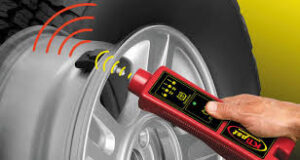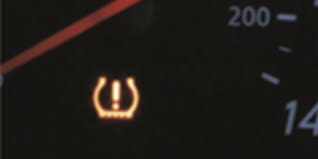Blog
Troubleshooting Common TPMS Issues in Your Vehicle
Troubleshooting Common TPMS Issues in Your Vehicle
A Tire Pressure Monitoring System (TPMS) is a vital tool for maintaining the safety and performance of your vehicle, but like any system, it can sometimes encounter issues. Whether you’re seeing a warning light or suspect your TPMS isn’t functioning correctly, troubleshooting these problems promptly can prevent bigger issues down the road. In this article, we’ll walk you through common TPMS issues and provide solutions to ensure your system is working at its best.
What is TPMS and Why It’s Important?
The TPMS in your vehicle alerts you when a tire is underinflated or overinflated, helping to maintain optimal tire pressure. This contributes to better safety, increased fuel efficiency, longer tire life, and improved vehicle performance. If you’ve ever encountered problems with your TPMS, here are some common issues and how to troubleshoot them.
1. TPMS Warning Light Stays On
What It Means:
If the TPMS warning light stays on even though your tires appear properly inflated, it’s often a sign that there’s an issue with the system itself. It could be triggered by a variety of factors, such as a malfunctioning sensor or low tire pressure.
How to Troubleshoot:
- Check Tire Pressure: Use a manual tire pressure gauge to ensure all tires are properly inflated. If any tire is low, top it up to the recommended level and see if the warning light goes off.
- Check for Tire Damage: Look for punctures, cuts, or other visible damage to the tires that could cause air loss.
- Reset the TPMS: Some vehicles require a reset after correcting the tire pressure. Check your owner’s manual for instructions on how to reset the TPMS system.
- Consult a Professional: If the light remains on after checking the tires and resetting the system, it may indicate a malfunctioning sensor or an electrical issue, and you may need to consult a mechanic.

2. TPMS Warning Light Blinks
What It Means:
A blinking TPMS light usually indicates a more serious issue with the system, such as a faulty sensor or communication error.
How to Troubleshoot:
- Check Tire Pressure: Just like a steady TPMS light, low tire pressure could trigger this. Check and adjust the pressure in all tires.
- Sensor Issues: If the warning light continues to blink even after the tires are properly inflated, the issue may be with the TPMS sensor. Sensors may fail due to battery depletion, damage, or corrosion.
- Visit a Professional: If the blinking persists, it’s advisable to have the system diagnosed by a professional mechanic who can assess the sensors and perform repairs or replacements.
3. TPMS Warning Light Turns On After Tire Rotation or Replacement
What It Means:
If the TPMS warning light turns on after a tire rotation or replacement, it could be because the system needs to be recalibrated to the new tire positions.
How to Troubleshoot:
- Reset the TPMS: Many vehicles require you to reset the TPMS after tire rotation or replacement to ensure it recognizes the new positions of the sensors. Check the vehicle manual for reset instructions.
- Ensure Proper Sensor Positioning: When new tires are installed, ensure the sensors are properly calibrated to the new wheel positions.
- Sensor Battery Life: If your vehicle uses a direct TPMS with sensors in the wheels, make sure the sensor batteries are not dead.
4. TPMS Light Comes On During Cold Weather
What It Means:
Cold weather can cause the air in your tires to contract, lowering the tire pressure. This can trigger the TPMS warning light.
How to Troubleshoot:
- Increase Tire Pressure: When the weather warms up, tire pressure often returns to normal, but if it’s very cold, you may need to manually add air to your tires to bring them back to the recommended levels.
- Use a Tire Pressure Gauge: Always check your tire pressure with a manual gauge in the winter months to ensure they’re properly inflated.
5. TPMS Light Is On, but Tires Are Fine
What It Means:
If the TPMS light is on, but your tires appear to be properly inflated, it could indicate an issue with one of the system’s sensors.
How to Troubleshoot:
- Inspect Each Tire for Sensor Damage: The sensors are installed inside the tires, and over time they can become damaged or corroded. If you notice any physical damage or irregularities, it’s time to replace the sensor.
- Check the Battery: TPMS sensors have batteries that eventually wear out. If a sensor’s battery is dead, it may need to be replaced.
- Check for System Malfunction: A malfunctioning system could cause the TPMS warning light to turn on. A professional diagnostic tool can help pinpoint the exact issue.
6. TPMS Not Working After Tire Pressure Is Corrected
What It Means:
If the TPMS doesn’t turn off after fixing the tire pressure, it could indicate that the system needs to be reset, or there may be a malfunction.
How to Troubleshoot:
- Reset the System: Refer to your vehicle’s manual to learn how to reset the TPMS after adjusting the tire pressure.
- Drive for a Few Miles: In some cases, the TPMS system needs a short drive to recalibrate itself and turn off the warning light.
- Check for Sensor Issues: If resetting doesn’t work, a malfunctioning sensor or a faulty receiver may be to blame. Take your vehicle to a mechanic to inspect and replace any faulty components.

7. TPMS Light Won’t Turn Off After Tire Replacement
What It Means:
If the TPMS light remains on after replacing a tire, it could be that the new tire doesn’t have a compatible TPMS sensor, or the sensor was damaged during installation.
How to Troubleshoot:
- Confirm Sensor Compatibility: Ensure that the new tire has the appropriate TPMS sensor installed.
- Sensor Damage: If the sensor was damaged during installation, it may need to be replaced.
- Seek Professional Help: A mechanic can help determine whether the sensor needs to be replaced and can install a new one if necessary.
Conclusion
The Tire Pressure Monitoring System (TPMS) is an essential safety feature that helps ensure your tires are properly inflated, but like any system, it can sometimes experience issues. Whether it’s a warning light that won’t go off or problems with the sensors, understanding common TPMS issues and troubleshooting them can help you maintain your vehicle’s safety and performance.
If you’re ever unsure about an issue with your TPMS, it’s always a good idea to consult with a professional mechanic who can provide expert diagnostics and repairs.
For more information on TPMS and vehicle maintenance, visit RegalXmuse.com!


